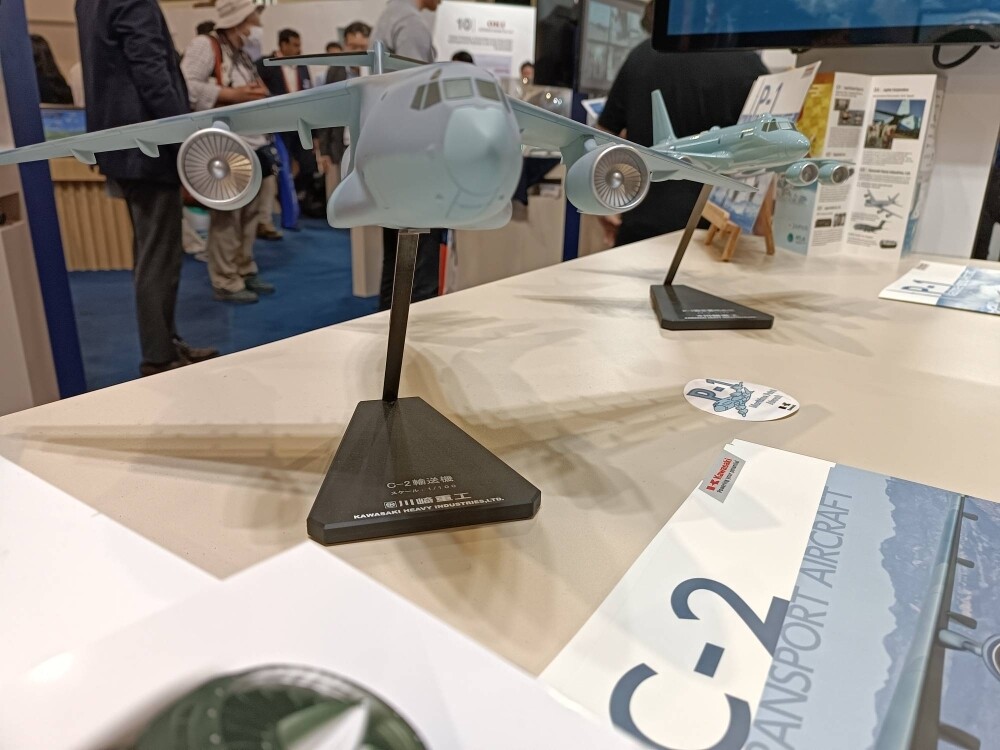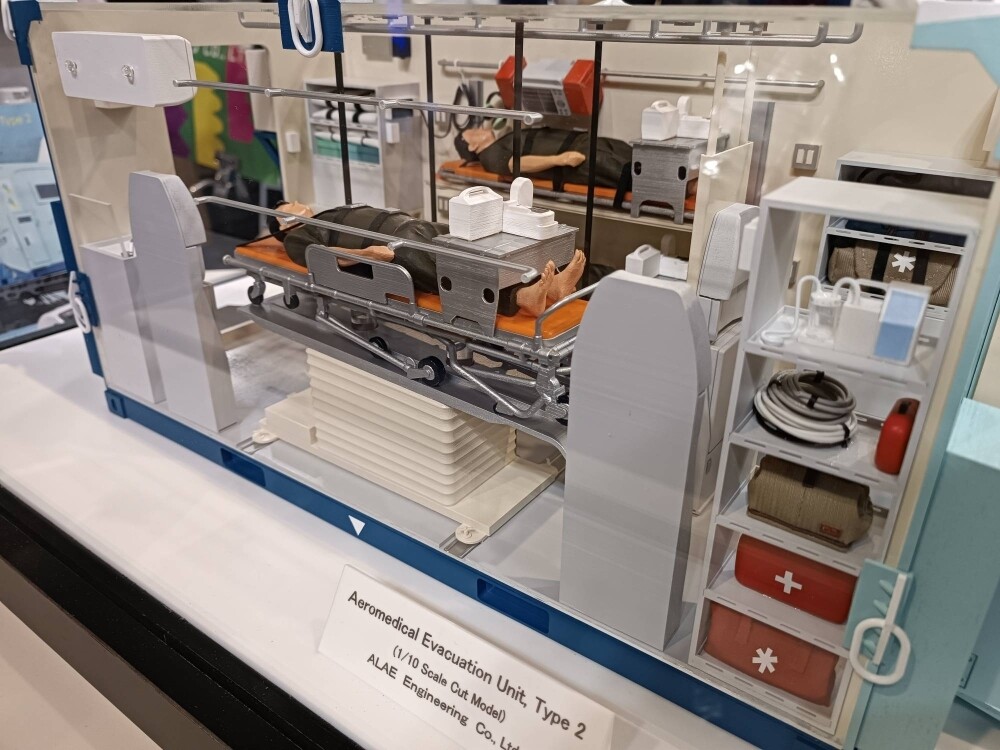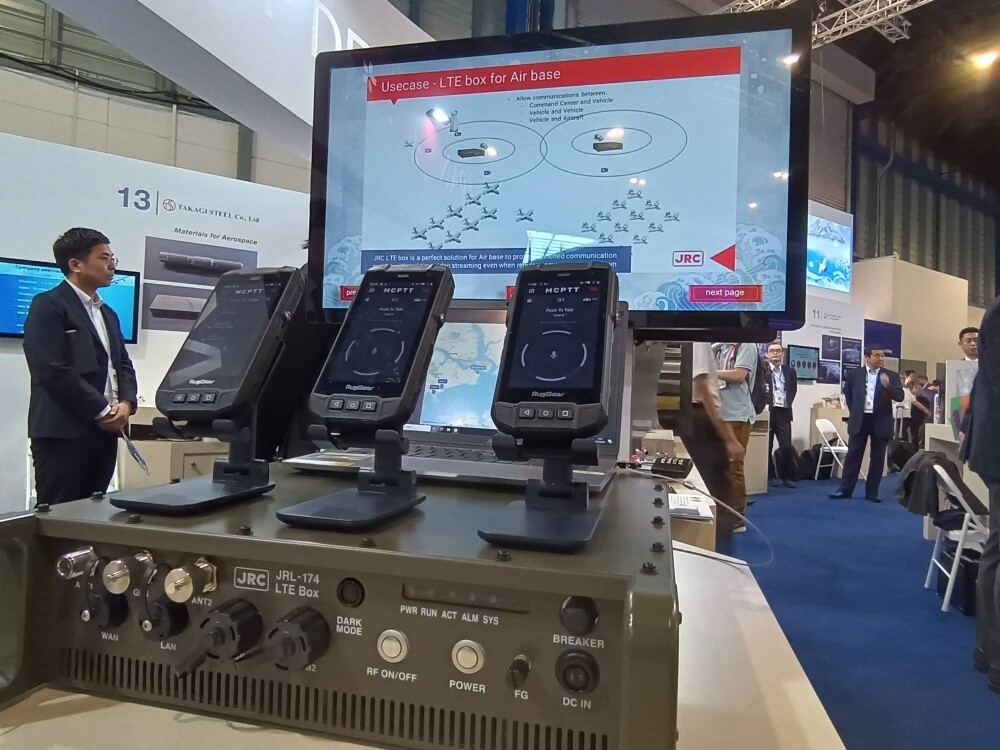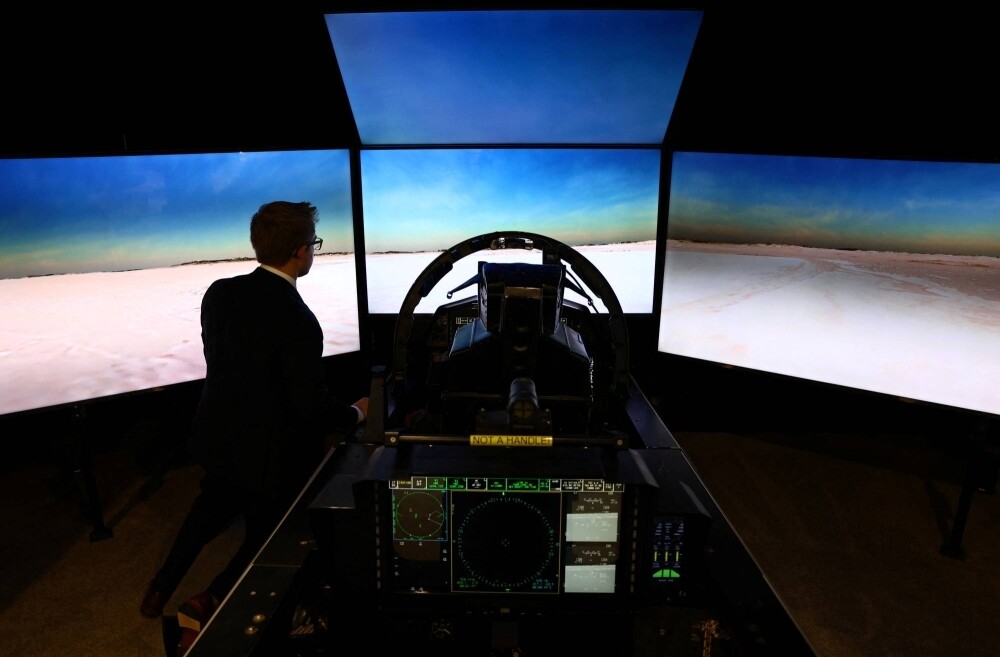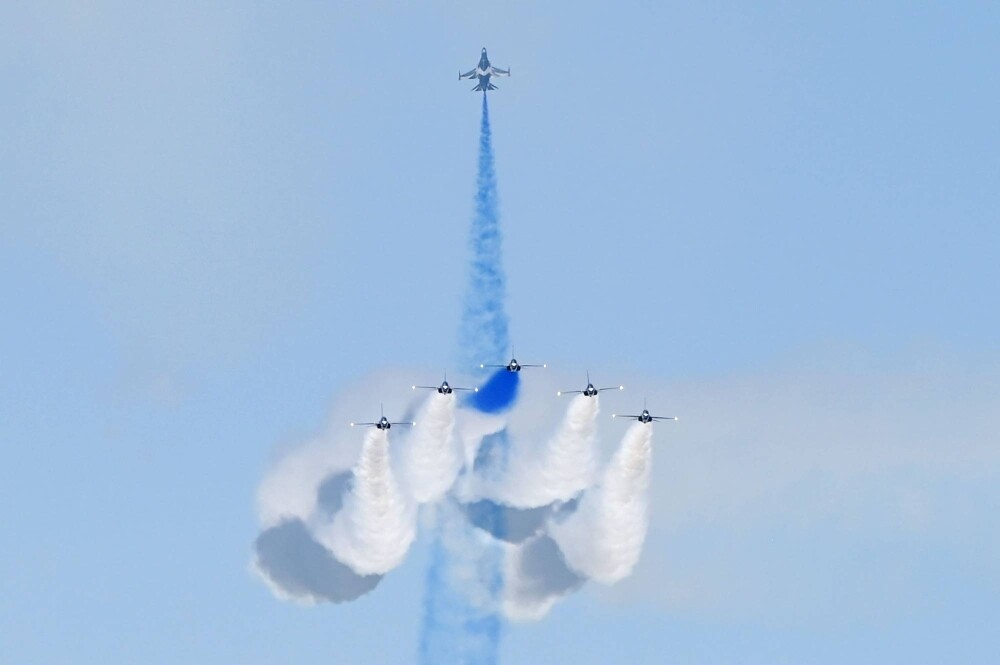At top airshow, Japanese firms explore defense export opportunities

The Japan Pavillion is seen at the Singapore Airshow on Wednesday. | GABRIEL DOMINGUEZ
BY GABRIEL DOMINGUEZ
STAFF WRITER
SHARE
Feb 21, 2024
SINGAPORE –
As Tokyo builds up its regional security partnerships and gradually relaxes its strict defense export guidelines, Japanese companies are stepping up efforts to market and export their products, including to Southeast Asian countries — a development on full display at this year’s Singapore Airshow.
From the C-2 transport plane and the P-1 maritime patrol aircraft to mobile air-defense radars, space-debris removal systems and aeromedical evacuation units — the range of products offered by Japanese firms at the largest civil and military aerospace exhibition in Asia is highly diverse and sophisticated.
The marketing push is being supported by the Defense Ministry and its Acquisition, Technology and Logistics Agency (ATLA). Both of them are not only exhibiting for the first time at the event but also hosting over a dozen companies at their stand.
From large corporations such as Kawasaki Heavy Industries and NEC to smaller players such as Kyoto-based Mitsufuji, companies from Japan turned up in large numbers at this year’s event: at a total of 43, this is the second-largest Japanese turnout at the airshow, behind the 2020 edition’s 59 firms.
Mock-ups of Japan’s C-2 transport plane and P-1 maritime patrol aircraft are displayed at the Singapore Airshow on Wednesday. | GABRIEL DOMINGUEZ
“As Japan revises its defense exports rules, companies see greater export opportunities, particularly in the Indo-Pacific region,” Hideki Fukawa, director of ATLA’s Defense Equipment Cooperation Planning Office, told The Japan Times.
“The Defense Ministry wants to support these companies by advising them, creating marketing opportunities and opening communications channels with foreign governments and firms.”
This, he added, is part of Tokyo’s efforts to not only strengthen regional security tie-ups but also Japan’s defense-industrial base.
“Particularly, small and midsize Japanese enterprises have developed technologies and capabilities that can boost resilience in international defense supply chains,” he said, adding that this push by domestic firms is a “positive step not just for Japan but also for allies and like-minded countries.”
A mock-up of a hangar covered in a special material developed by Japanese firm Mitsufuji to protect aircraft and other platforms with sensitive equipment from electromagnetic threats is displayed at the Singapore Airshow on Wednesday. | GABRIEL DOMINGUEZ
Among the companies debuting at the airshow is Tokyo-based trading company Jupitor Corporation, which is displaying a model of an aeromedical evacuation unit developed and manufactured by Saitama-based firm ALAE Engineering.
The product, informally known as a “flying intensive care unit,” is already in service with the Self-Defense Forces. It is shaped as a container, enabling up to two of them to be transported simultaneously on a single C-130 or C-2 aircraft.
Each unit has enough room to carry critical medical equipment and enable four medical staff to care for up to three patients. The units can be used to treat patients in both conflicts and natural disaster situations.
Another newcomer at the event is Mitsufuji, which is exhibiting a new membrane material designed to protect military and other electronically sensitive equipment from electromagnetic threats. This includes electromagnetic pulse attacks that can disrupt communications and other computer systems on modern military platforms.
A model of the interior of ALAE Engineering’s aeromedical evacuation unit is shown off at trading company Jupitor Corporation’s booth at the Singapore Airshow on Wednesday. | GABRIEL DOMINGUEZ
The fabric can also be used to cover hangars to better conceal and protect military aircraft, the company said.
Also making its Singapore debut is Tokyo-based firm JRC, which specializes in secure communication networks for militaries and law enforcement agencies. In Singapore, the company is offering a portable base station called the Tactical LTE Box, which allows for the creation of an ad hoc, real-time audio-visual communications network.
Advanced technologies were also put on display by satellite operator SKY Perfect JSAT. The Tokyo-based company is offering both Japanese and international customers a range of services, including Earth imaging and analysis.
It is currently partnering with Japanese startup iQPS, which plans to eventually operate a constellation of 36 small synthetic-aperture-radar satellites that the firm says will be capable of capturing images of any part of the Earth every 10 minutes — a critical national security capability.
A model of Subaru’s UH-2 multirole utility helicopter is displayed at the Singapore Airshow on Wednesday. | GABRIEL DOMINGUEZ
The firm said it is also cooperating with the Japan Aerospace Exploration Agency on a “Geo-Optical Monitor” project to set up a satellite-observation capability from the agency’s future ETS-9 geostationary satellite currently under development. The goal is to allow government agencies to monitor space objects, including other satellites, not just from Earth but also from space.
The company also said that one of its subsidiaries, Orbital Lasers, was working on a space debris removal system. It is developing a satellite equipped with a laser that, when pointed at the debris, can slow down its speed and rotation to the point that it can be physically removed. A prototype is expected within three years.
Large Japanese firms are also present in Singapore, with Kawasaki Heavy Industries promoting its P-1 and C-2 aircraft as well as a host of aircraft engines, including its latest KJ300 turbofan engine. The company says this could be used to power military drones amid growing international demand.
Subaru is promoting its UH-2 multirole utility helicopters, while NEC was displaying models of a long-range, mobile air-defense radar system. The company said the radar is part of its push to promote and market defense equipment outside Japan.
JRC’s portable base station, the Tactical LTE Box, which allows for the creation of an ad hoc, real-time audio-visual communications network, is displayed at the Singapore Airshow on Wednesday. | GABRIEL DOMINGUEZ
In December, Tokyo revised the country’s defense equipment and technology transfer guidelines — originally established in 1976 — for the first time since 2014, allowing the export of finished defense products, including lethal ones, manufactured in Japan under foreign license to countries that hold patents for the equipment.
The revisions also allow for transfers of components and technology resulting from joint development projects, although no decision has yet been made on the export of jointly developed finished products — such as the next-generation fighter jet Japan plans to develop with Italy and the United Kingdom. The Japanese government is considering a plan to limit — at least for now — exports of the fighter to certain countries.
Because Japanese companies have historically faced export constraints, Tokyo’s revised defense posture, combined with a greater willingness to support domestic firms, is giving the companies the confidence to pour more resources and effort into the export market, says Jeffrey Hornung, a senior political scientist and Japan lead at the Rand Corp.
ATLA’s Fukawa agrees, saying he is confident that the number of Japanese firms participating at international defense exhibitions will grow as more of them see the potential to support regional stability and benefit from the growing global defense market.
A Boeing F-15 simulator is displayed during the Singapore Airshow on Wednesday. | REUTERS
An important factor in this regard is Tokyo’s push to bolster its network of international security partners.
This has included Tokyo’s first-ever military aid program, launched last year, with the Philippines, Bangladesh, Malaysia and Fiji among the first beneficiaries.
At the same time, Japan is reportedly drawing up a new 10-year plan to provide sustained and evolving assistance to enhance the maritime capabilities of the Philippines, Indonesia, Malaysia and Vietnam.
“Southeast Asian countries have been diversifying their sources of defense equipment, driven by the need to modernize aging/obsolete kit and threat perceptions,” said Yee Kuang Heng, an international security professor at the University of Tokyo.
Members of the South Korean Air Force’s Black Eagles aerobatics team perform an aerial display at the Singapore Airshow on Tuesday. | AFP-JIJI
Japan, which is playing catch-up with more established defense equipment suppliers such as the United States, South Korea and Russia, may be able to tap into this trend — but first it has to raise awareness of what it can offer and its relative niche advantages, he added.
Hornung agrees, saying that the success of Japanese firms will rest on whether Tokyo can follow through on easing long-standing regulations.
“Regional countries want lethal capabilities, largely with no strings attached on how they can use them or re-sell them to third countries in the future,” he said.
“Should Japanese companies continue to face restraints in these areas, that could stunt the amount of forward progress they can make.”
KEYWORDS
AIRLINES, SINGAPORE, AVIATION, DEFENSE, DEFENSE MINISTRY, TRADE
